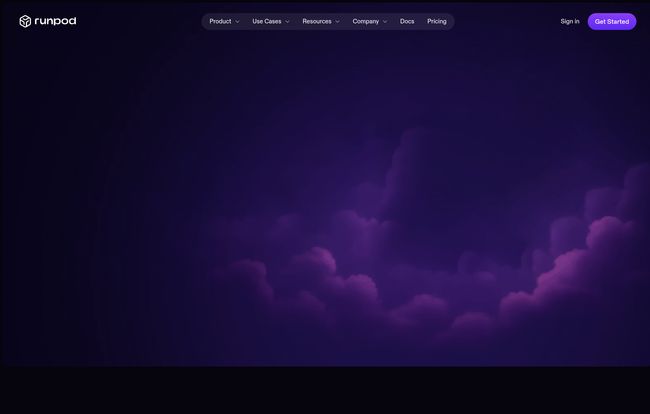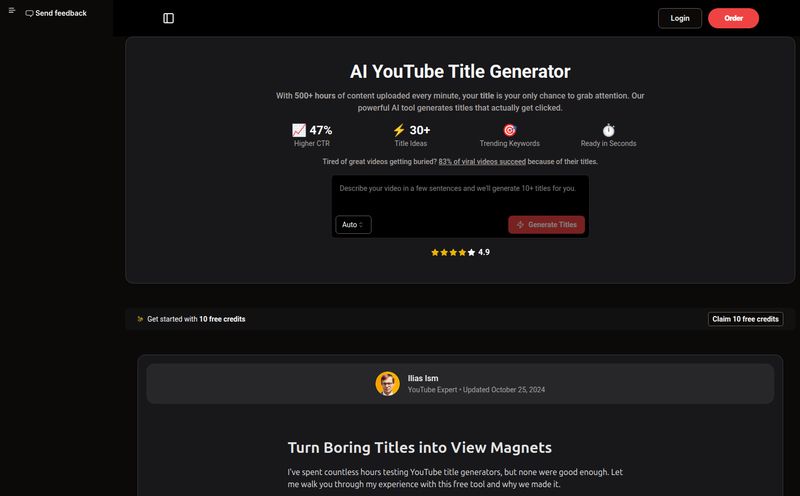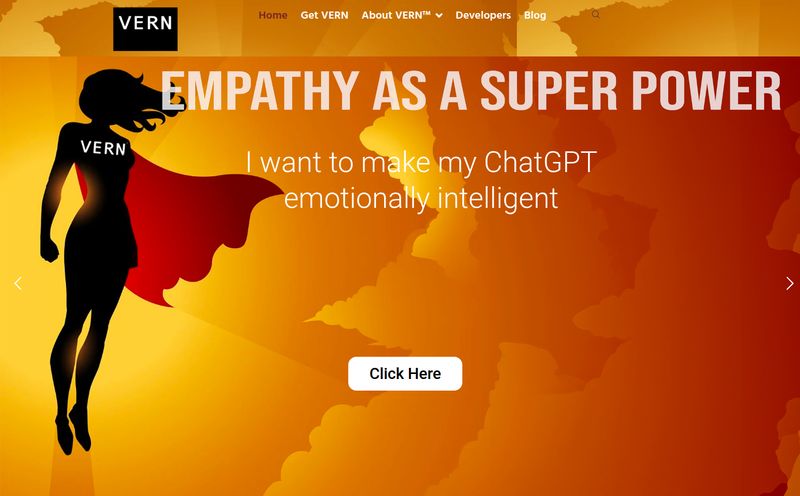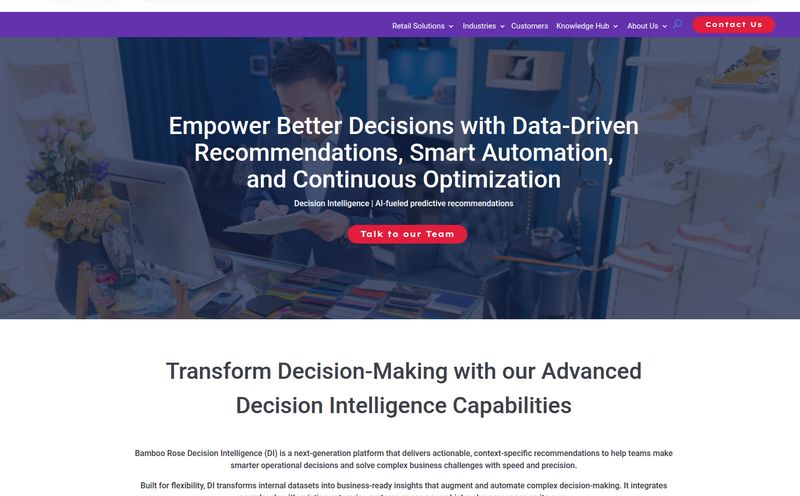The world of AI is moving at a breakneck speed, but getting your hands on the necessary computing power feels like trying to book a last-minute flight on a holiday weekend. It’s expensive, it’s frustrating, and sometimes, it feels like the big players—your AWS, GCP, and Azures of the world—have a monopoly on the good stuff. I've seen countless startups and indie devs with brilliant ideas get stopped dead in their tracks by a five-figure cloud bill. It's a tale as old as, well, 2022.
For a while now, I've been on the hunt for alternatives. Not just cheaper options, but smarter ones. Platforms built by people who seem to get the struggle. And that search recently led me to a name that's been buzzing in a few developer communities: RunPod. It promises cost-effective GPU rentals without the usual headaches. But does it deliver? I decided to take a closer look.

Visit RunPod
So, What's the Big Deal with RunPod Anyway?
At its core, RunPod is a cloud platform that specializes in renting out GPU-powered servers. Think of it less like a massive, sprawling department store like AWS, and more like a specialty boutique that focuses on one thing and does it really well. Their main game is providing the raw horsepower needed for AI development, model training, and inference, but at prices that don't make your accountant cry.
They cater to a wide crowd, from university research teams on a shoestring budget to startups that need to scale their AI applications without handing over their firstborn for a few A100s. They offer both on-demand GPU instances (what they call GPU Cloud) and a serverless option for when you just need to run inference tasks without managing a full-time machine. It's a pretty compelling setup, especially if you're tired of navigating the labyrinthine dashboards of the cloud giants.
The Features That Actually Move the Needle
A fancy landing page is one thing, but the feature set is where the rubber meets the road. RunPod isn't just a collection of cheap GPUs; it's a whole ecosystem built around them.
GPU Cloud vs. Serverless GPUs
RunPod splits its main offering into two paths. The GPU Cloud is your traditional instance rental. You pick a GPU, boot it up, and you have a secure, private machine to do your work—perfect for long training runs, development, or anything that requires persistent state. On the other hand, the Serverless GPU offering, which they call Pods, is designed for inference. You give it your container, and it auto-scales to handle incoming requests. This is huge for deploying a model into a production application, as you only pay for the compute time you actually use. It’s a smart way to separate your development and production workflows.
Developer-First Mindset
You can tell this platform was built by engineers for engineers. They offer a simple command-line interface (CLI) tool that makes deploying and managing your pods a breeze. Plus, they have full support for custom Docker containers, meaning you’re not locked into some proprietary environment. You can bring your own tools, whether it’s PyTorch, TensorFlow, or some obscure framework you love. This flexibility is something I personally value a lot. I've been burned before by platforms that promise simplicity but trap you in their 'walled garden'. RunPod feels more open and honest.
And I have to mention Flashboot. They claim cold boot times under 3 seconds for their serverless containers. For anyone who's dealt with serverless cold starts, that number sounds almost magical. It means your application can stay responsive without needing to keep expensive instances warm 24/7.
Let's Talk Money: The RunPod Pricing Breakdown
Alright, this is the part everyone's waiting for. How much does it actually cost? RunPod's pricing is refreshingly transparent, and honestly, pretty damn competitive. They split their instances into two main categories:
- Secure Cloud: These are enterprise-grade GPUs hosted in T4 data centers. They offer higher reliability and performance, but at a slightly higher price point. This is what you'd use for mission-critical workloads.
- Community Cloud: This is the really interesting part. These are GPUs sourced from a distributed network of providers. The performance can be a bit more variable, but the prices are significantly lower. It's a fantastic option for experimentation, personal projects, or non-critical training jobs where saving a buck is the top priority.
Here’s a little snapshot of some of the popular options. Keep in mind these prices can fluctuate, so always check their site for the latest numbers.
| GPU Model | Specs | Starting Price (Per Hour) |
|---|---|---|
| RTX A5000 | 24GB VRAM, 25GB RAM | $0.16 |
| RTX 4090 | 24GB VRAM, 29GB RAM | $0.34 |
| A100 PCIe 80GB | 80GB VRAM, 125GB RAM | $1.19 |
| H100 PCIe 80GB | 80GB VRAM, 188GB RAM | $1.99 |
The real kicker? Zero fees for data ingress or egress. Let me say that again. Zero. Freaking. Egress. Fees. If you’ve ever uploaded a dataset to a major cloud provider and then tried to move it somewhere else, you know the pain of the egress tax. It can be a huge, unpredictable cost. RunPod getting rid of that is a massive vote of confidence for developers.
My Honest Take: The Good and The Not-So-Good
No platform is perfect, and its important to see both sides of the coin. After digging in, here's my unfiltered take.
What I'm Excited About
The cost-effectiveness is obviously the headline. Being able to rent an RTX 4090 for less than the price of a coffee is a game-changer. The 99.99% uptime guarantee for the Secure Cloud provides peace of mind, and the combination of an easy-to-use UI with a powerful CLI hits a sweet spot for both new and experienced users. The zero egress fees just feels like a genuinely pro-consumer move in an industry that often feels like it's trying to nickel-and-dime you at every turn.
A Quick Reality Check
Now, for the trade-offs. The Community Cloud, while cheap, comes with a caveat of potentially variable performance. You're trading rock-solid consistency for a lower price, which is a fair deal, but something you need to be aware of. If your job is extremely time-sensitive, sticking to the Secure Cloud is probably wise. Also, some of the more advanced, enterprise-level features and instance types require you to contact their sales team. This isn't unusual, but it does add a small bit of friction compared to a purely self-service model.
Who Should Be Using RunPod?
"RunPod feels like it was built for the new generation of AI builders: fast, lean, and allergic to corporate bureaucracy."
In my opinion, RunPod is an almost perfect fit for a few key groups:
- Startups and Small Businesses: When you're bootstrapping, every dollar counts. RunPod lets you access top-tier hardware without the massive upfront commitment.
- Academic Researchers and Students: Grant money is finite. The low-cost Community Cloud is ideal for running experiments and research projects without blowing the budget.
- Indie Developers and Hobbyists: If you're building a cool AI side-project, this is your playground. You can spin up a powerful GPU for a few hours, do your work, and shut it down, costing you just a few dollars.
Who might want to stick with the big guys? A massive corporation with a multi-year, multi-million dollar contract with AWS and a deep integration into its ecosystem probably isn't going to switch everything over. But even they might find RunPod useful for burst capacity or for R&D teams that need more agility.
Frequently Asked Questions about RunPod
- 1. How does RunPod compare to other services like Vast.ai or Lambda Labs?
- They're all players in the same space of cost-effective GPU clouds. RunPod's strengths are its polished UI/UX, the clear distinction between Secure and Community clouds, and its very fast serverless cold-start times with Flashboot. The best choice often comes down to specific GPU availability and personal preference.
- 2. What is the real difference between the Secure Cloud and Community Cloud?
- Secure Cloud uses GPUs in high-security, professional data centers with guaranteed reliability. Community Cloud uses a distributed network of machines, which lowers the cost but means performance and availability can be more variable. Think of it as professional studio vs. a cool indie venue.
- 3. Can I use my own custom environments and Docker containers?
- Absolutely. This is one of its biggest strengths. You can pull public or private images and run your exact environment, giving you complete control and reproducibility.
- 4. Are there any hidden costs I should know about?
- RunPod is very transparent. You pay for your compute time and any persistent storage you use ($0.05 /GB/month for network storage). The biggest 'non-hidden' cost they've eliminated is the data egress fee, which is a major win.
- 5. Is RunPod a good choice for someone new to cloud computing?
- I'd say yes. While it's powerful, the interface is much simpler to navigate than AWS or GCP. They provide pre-configured templates for popular tools like Jupyter, which makes it easy to get started without a ton of command-line wizardry.
My Final Thoughts on RunPod
Look, the AI hardware space is a tough one. It’s easy to get cynical about another platform promising to change the world. But RunPod feels different. It’s practical, it’s developer-focused, and it solves a very real, very expensive problem that I and many others in the field face every day.
It’s not trying to be everything to everyone. It’s a specialized tool that does its job exceptionally well. By focusing on affordable, accessible GPU power, RunPod is doing more than just renting servers; it’s helping to democratize access to the tools that are shaping our future. For my money, it’s not just a platform to watch—it’s one to start using.



